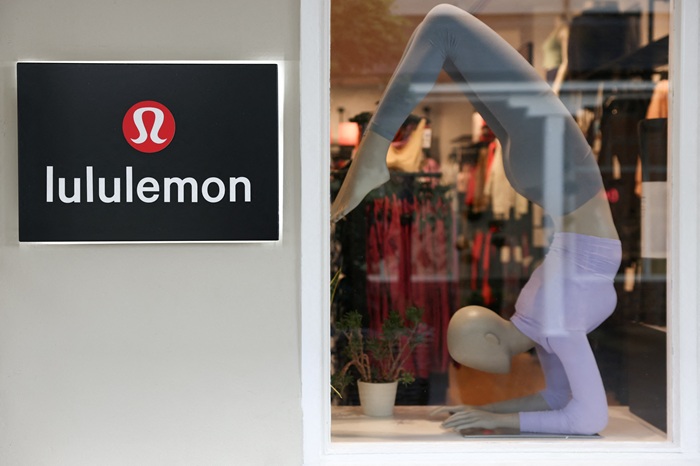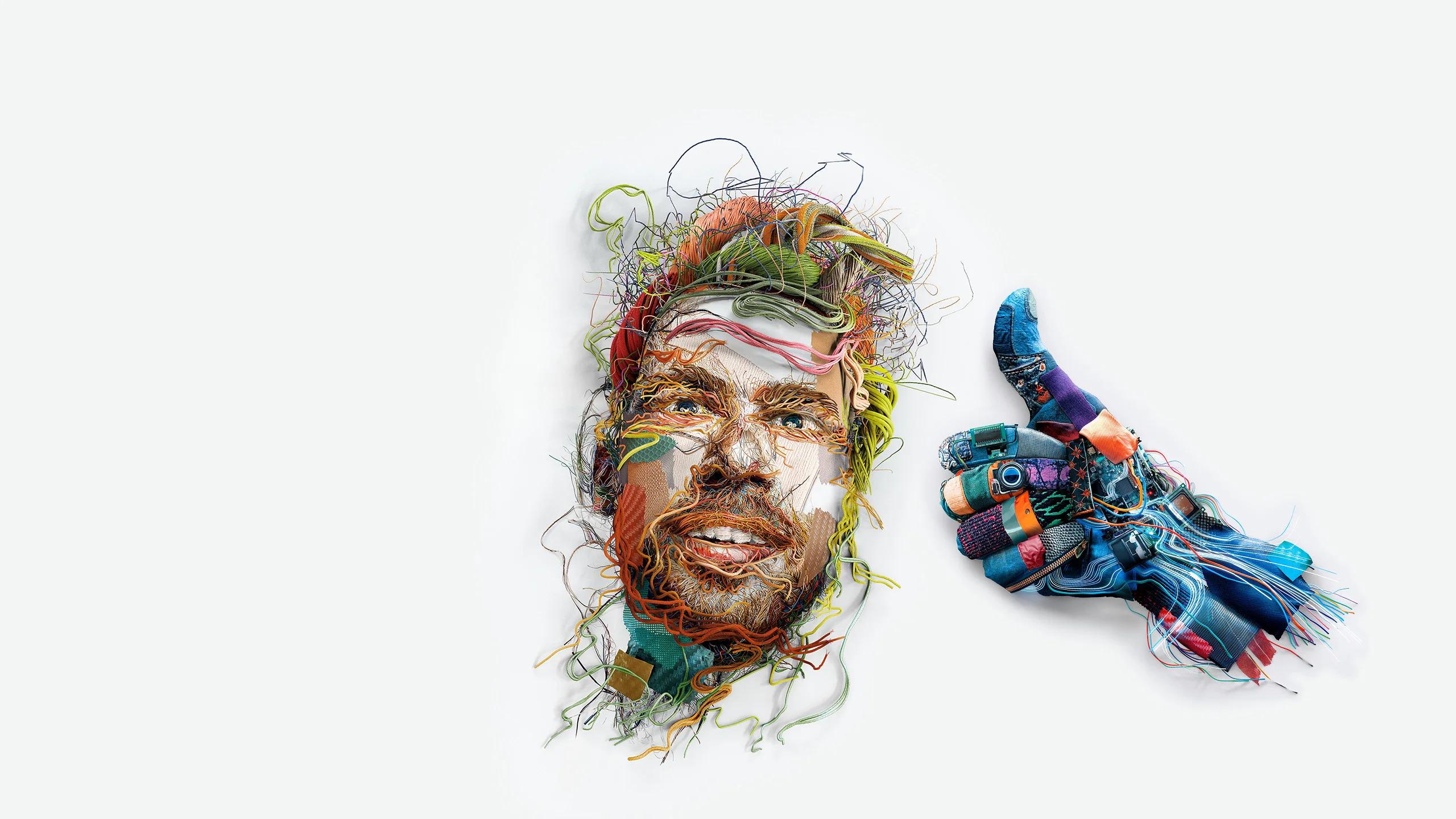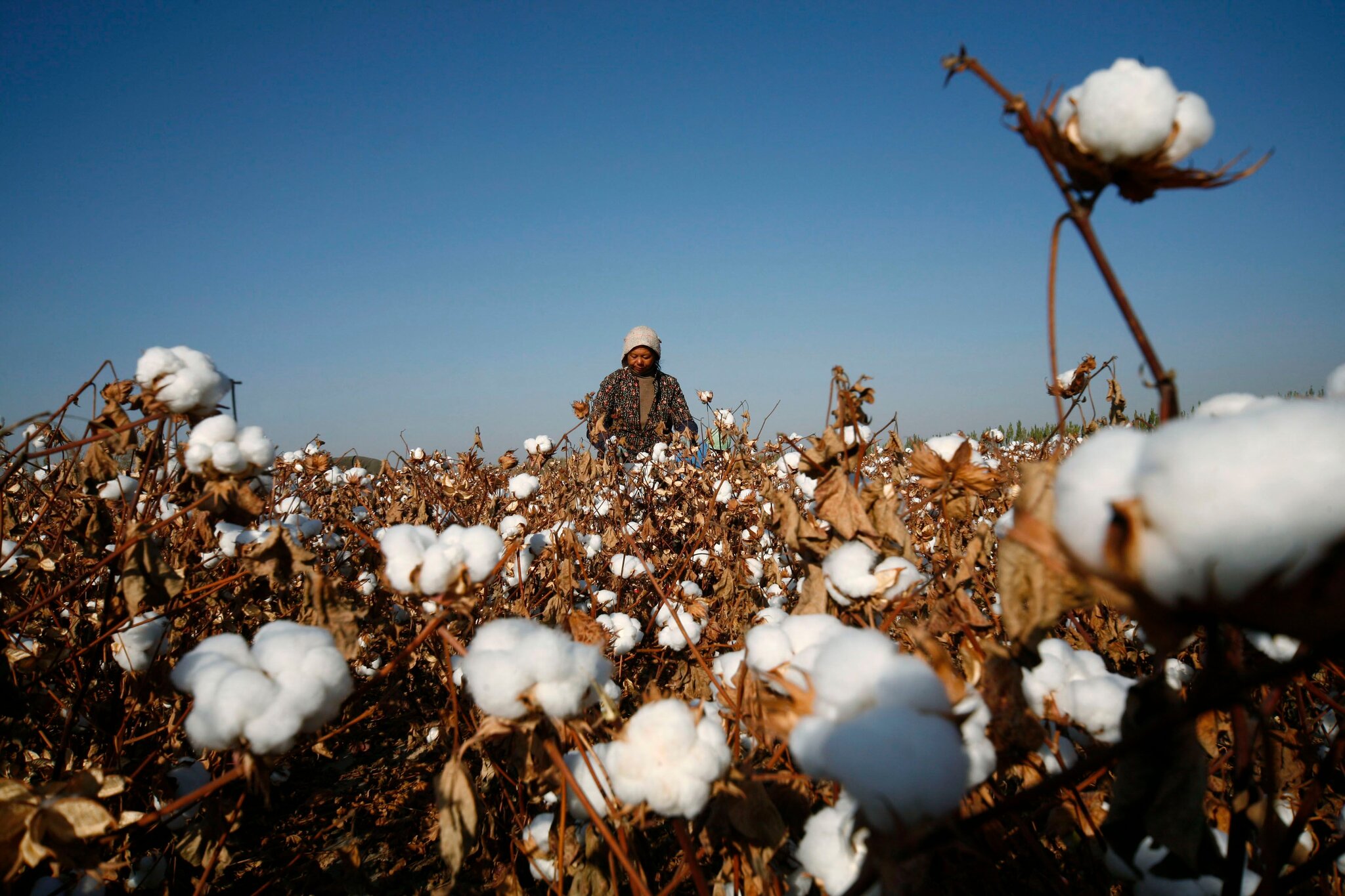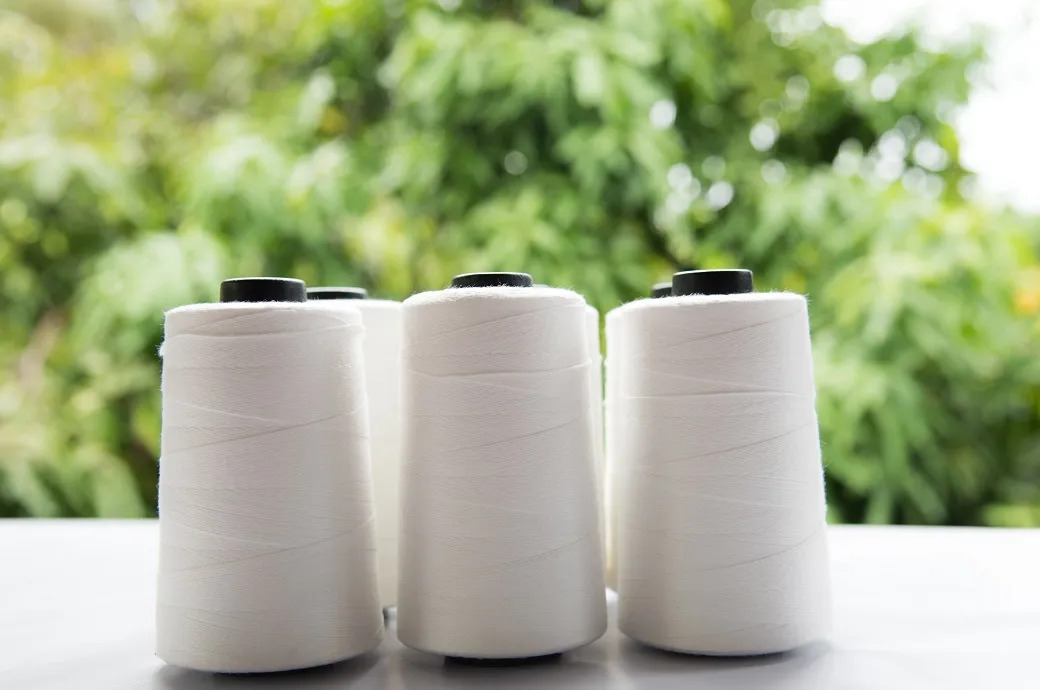
Over 135 companies from the upstream textile supply field from the Euromed region and Moroccan clothing manufacturers exhibited at this year’s editions of Maroc in Mode & Maroc Sourcing on October 24 and 25, in Casablanca. Denims and piece-dyed casual trousers were a focus of the exhibition with many innovative ranges on display.
Organised by Amith, the trade body for Moroccan textile and clothing manufacturers, in collaboration with Maroc Export saw retailers and fashion labels such as Stefanelli, Simonetta, Antica Sartoria or Pinko from Italy; Cortefiel, Iturri, Escorpion from Spain; Perry Ellis, Topshop, House of Fraser from Great Britain and Willy Bogner, Mac, Mustang and Orsay from Germany visit the fairs.
The largest groups of visitors came from France, including Galeries Lafayette, Caroll, Cache Cache, Pimkie, La Redoute, La Nouvelle Vague, Go Sport along with Russian labels exhibiting for the first time. An extensive range of textiles for the production of in-house collections in the fields of womenswear, menswear, childrenswear, jeans, body and beachwear, as well as branded and private label collections and sustainably produced eco collections were on display.
Owing to rising production costs in Asia, Morocco’s textile and clothing industry is being viewed as a safe and comfortable sourcing destination. Duty-free delivery to the EU, short distances involved in transit, as well as environmentally friendly and sustainable production methods are some advantages that make Morocco attractive for international manufacturers.
Garment Printing, a leading international promotional and customized clothing company, offering a complete range of bespoke printing techniques has re-invested in its innovative IT platform that improves on its already strong, international supply chain. Combined with an enhanced customer relationship system, the company is focused on reducing turn-around times and improving customer satisfaction, proven by its increase in positive feedback.
“Fast Track IT innovation is driving our express T-shirt printing demand,” says CEO Gavin Drake. Having printed and embroidered extensively for the television, media, music, and advertising companies and global brands, Garment Printing is familiar with sudden changes and urgent requests. Drake has applied his 15 years experience of the printing business to solving unexpected pressures on his companies supply chain and ensuring high quality service for his customers, explaining how his customer services teams are like an extension of its clients marketing teams.
Garment Printing does not have fixed turnaround times. They work as per client’s requirements and urgent delivery deadlines. Whether it’s same-day T-shirt printing, next-day embroidered polo shirts, or anything personalized, customized or branded with company logos and designs, Garment Printing makes it happen.
www.garmentprinting.co.uk
The 9th edition of Interfiliere Shanghai & Shanghai Mode Lingerie, two trade fairs dedicated to lingerie and swimwear were held from October 22-23, 2013 at Shanghai Exhibition Centre. The two-day show saw nearly 7,300 visitors from 60 countries.
One of the main attractions in this edition was the trend forum by Concepts Paris. It showcased selected fabric and product samples and gave away the trends for next lingerie and swimwear collections. With the aim of bridging the gap between Chinese and international lingerie and swimwear brands, Shanghai Mode Lingerie had a new format and layout.
The two day event also saw trend and branding seminars that was attended by designers, marketing managers and buyers looking for the latest trends. Concepts Paris, Carlin International, Stylesight gave away insights and information for next collections and seasons.
Shanghai Mode Lingerie also developed a top-class business club, exclusively focused on B2B meetings, to give visitors a unique opportunity to meet and sit down with brands. This helped existing and potential partners to know the products better and learn more about the brand identity and image.
For the first time, Eurovet collaborated with Stylesight, the leading content and technology solution provider for professionals in the style, fashion and design sectors. They presented beachwear trends for S/S 2015. Specialists explored the latest collections of 269 Interfiliere exhibitors and 41 lingerie and swimwear brands from Europe, US and Asia. The trade show attracted 71 per cent Chinese visitors. The top regions and provinces were Guangdong, Shanghai, Zhejiang, Jiangsu, Fujian and Beijing.
International visitors from Hong Kong, Taiwan, Japan, South Korea, United States, Thailand, Russia etc, attended the show. This time exhibition space increased from two to three halls. This edition profiled 269 local and international exhibitors from 17 countries divided into seven product-base.
 Made in France, the high-end apparel and accessories manufacturing trade show will take place in Paris from April, 9 to 10, 2014. This time the event will take place at a new venue, the Carreau du Temple. In fact, the historical venue where the event is set, is a major highlight this time. It will enable the show to build on the success of 2013 and encourage world-renowned contemporary know-how, techniques and craftsmanship to remain at the cutting edge of fashion. In keeping with the venue’s community spirit, ‘Made in France’ plans to open certain exhibitions and events to the general public.
Made in France, the high-end apparel and accessories manufacturing trade show will take place in Paris from April, 9 to 10, 2014. This time the event will take place at a new venue, the Carreau du Temple. In fact, the historical venue where the event is set, is a major highlight this time. It will enable the show to build on the success of 2013 and encourage world-renowned contemporary know-how, techniques and craftsmanship to remain at the cutting edge of fashion. In keeping with the venue’s community spirit, ‘Made in France’ plans to open certain exhibitions and events to the general public.
The Carreau du Temple site, home to an open-air market, was ordained for the trade of old linens, clothes and rags, which was transferred out of Les Halles at the beginning of the 19th century. By 1808, the newly-covered market traded in carpets, silks, ribbons, gloves, feathers, household linen, leather, and second-hand clothes. In 1904, the market hosted the first Foire de Paris (Paris Fair). It was a huge hit with the public and the Carreau du Temple became a hotspot for stylish men and women with limited means. Sports arrived at the Carreau in 1920, although fashion, particularly men’s fashion in the 1960s and 70s, remained the district’s speciality. Since the 1980s, the Carreau du Temple hosted Paris Fashion Week’s catwalks, connecting it to a world of luxury and fashion.
This edition of the show will gain momentum as it has got a new shareholder called PV Manufacturing. The district’s ready-to-wear designers, jewellery and accessories workshops and leading school of applied arts will continue to establish connections between fashion and production at Made In France. Around100 exhibitors from apparel and accessories manufacturing experts with exclusive rights to label their products ‘Made in France’, will be among the first to fill this new fashion hotspot, which also boasts of sports and cultural facilities. The high-end manufacturing trade show will bring together experts with the capacity to turn fashion and accessories designers’ visions into reality, in one ideal location.
After years of work and investment in R & D, Miroglio Textile has come up with a new method of printing textiles called E.volution. A one-of-a-kind, this method improves quality standards in terms of technical and environmental performance. It is a combination of advanced next-gen digital printing, great environmental responsibility and outstanding creativity.
E.volution has recently added two new products namely Twin Fabs and Filature Miroglio. Filature Miroglio, part of Miroglio Textile, is a range of yarns made of a blend of 80 per cent Tencel and 20 per cent Ecolabel certified regenerated noble fibres such as wool, alpaca, cachemire. These yarns has been woven and printed with the E.volution system by Miroglio Textile.
Unique ingredients together with the cooperation and skills of an important partner like Lenzing, coordinated and implemented by Miroglio Textile in yarn, fabric and printing innovation, makes this range really unique in its look, touch and functionality from both technical and sustainability point of view.
Saluzzo Yarns, part of Sinterama Group has recently introduced the ultimate top innovation of the Newlife platform. The new ‘Thermal management’ range by Newlife offers new levels of lightness and thermal insulation together with high sustainable performance. It’s an unique range that fits new applications both for casual and active wear. New textile partnerships were made which were in line with manufacturers requirements.
For work wear, unique offers came from a complete supply chain based on Newlife yarns, woven by French weaver Chamatex with the inclusion of Sympatex sustainable laminate for a specific high quality top work wear (police, transports etc) fabric range, with enhanced mechanical properties, abrasion resistance and colour fastness. The ultra thin membrane ensures excellent handle and comfort stretch. It has dynamic breathability which means, the more the body perspires, the more moisture the membrane can transport outwards. The membrane is 100 per cent recycled and recyclable.
Newlife is the result of an ambitious project developed by Saluzzo Yarns. It is a unique, complete and certified system of recycled polyester yarns obtained entirely from used plastic bottles, which are transformed into a polymer by mechanical, and non-chemical process, right up to the production of the 100 per cent ‘Made in Italy’ yarn thanks to an exclusive horizontal partnership agreement. The knowledge gained by Saluzzo Yarns, together with its on going research aimed at innovation and the complete, patented process, which forms the basis of this entirely Italian-made project, makes Newlife into an incredibly flexible platform.
Manufacturers of readymade garments (RMG) have decided to propose a minimum wage Tk 4,500 for garment workers before the wage board.
The Bangladesh Garment Manufacturers and Exporters Association (BGMEA) held a meeting with all former presidents and other business leaders to take their opinion on the wage hike.
In its last meeting held in August, the wage board had asked owners' and leaders to submit their proposals in the next meeting. The meeting was attended by its office bearers including president Atiqul Islam among others.
Arshad Jamal Dipu, who is representing the owners, said there is a scope for government interference in the recommendations of the wage board and if the government wants, it can increase the wages. "The industry can't afford a minimum wage of more than Tk 5,000 ($64.7) at this moment," he said. "That is why we want to discuss the matter with the government so that the final wage remains within Tk 5,000."
Nazma Akter, resident of Sommilito Garments Sramik Federation said workers will be cheated if their basic payment is not increased properly. She feared that it might lead to an unwanted unrest among workers if their demand is neglected.
Bangladesh Bank has launched an inquiry into the recent substantial increase in garments machinery import despite ongoing political turmoil to see whether there is any attempt to draw off money abroad through over-invoicing. The opening of LCs for import of capital machinery increased by 23 per cent in July-August period of the current fiscal year over the same period of the last fiscal year. The value of LC opened against capital machinery stood at $428 million and settlement stood at $380 million during the period as compared to $348.31 million and $334 million respectively in the corresponding period of the last year.
Bangladesh Bank senior executives suspect money laundering activities as opening of import letter of credit (LC) increased substantially during the fag end of the present government tenure. Generally, the trend is witnessed at the end of every government. They said the ill attempts are being made through over-invoicing as the imported machinery are reported as new and at higher price, but actually those would be second hand ones at lower price.
The rising trend is illogical, say experts, as the entrepreneurs remain shy of making fresh investment in this situation of political instability ahead of the upcoming general election. Earlier, Anti Corruption Commission of Bangladesh had moved to investigate the cause of significant increase in LC opening.
The value of Nepal’s readymade garments exports have risen by 17.8 per cent year-on-year, during the first two months of Nepali financial year that began on July 16, 2013. Depreciation of the Nepali currency vis-à-vis the US dollar was the major factor contributing factor that increased exports. On July 16, 2013, the exchange rate for 1 US dollar was Np Rs 95.01, which gradually rose to Rs 101.47 on September 15, 2013.
Nepal exported garments worth Np Rs 786.2 million ($8 million) in July to September, 2013 period as compared to exports worth Np Rs 667.4 million ($6.8 million) made during the corresponding period of last fiscal, as per the latest data from the Nepal Rastra Bank. During the two-month period, Nepal’s garment exports to India increased to Np Rs 55.1 million ($0.55 million), as against exports valued at Np Rs 35.2 million ($0.36 million) made during the same period last year.
For Nepal, garments were the second-largest export item, after hand knitted carpets, during 1990-2000 and fetched Np Rs 13.12 billion ($0.13 billion) at its peak. However, apparel exports declined to Np Rs 11.89 billion ($0.12 billion) in 2003-04, and then to around Np Rs 4 billion ($0.04) in 2012-13.
The inclusion of garments in the revised GSP would help Nepali clothing to qualify for preferential access to the US market. In addition, the Ministry of Commerce and Supplies (MoCS) is also considering the inclusion of garments in the Nepal Trade Integration Strategy 2010 priority product list, in order to boost the sector.
Cambodia’s garment exports continued to grow in the first nine months of the year in spite of the political uncertainty. The country’s garments and footwear exports were worth $4.1 billion in the first nine months of this year, a rise of 22 per cent from the $3.44 billion in the nine months upto September 2012, the Ministry of Commerce has revealed. As per Garment Manufacturers Association in Cambodia (GMAC), though volumes have increased, factory profit margins were squeezed due to labour disputes and demand for higher wages.
GMAC points out that the US is the biggest market for Cambodian garments and textiles, with imports worth $1.21 billion in the first nine months. Europe, Canada and Japan are the major importers.
Hing Thoraxy, Senior Researcher at the Cambodia Institute for Cooperation and Peace said increasing garment exports reflects Cambodia’s improved economic conditions in and its growing importance in the exports market. Thoraxy added that while output is good, more is needed to diversify and enhance production levels. “We need to shift from simple T-shirts to produce more complicated products such as coats and shirts with embroidery, to add value to the product,” he said.
www.gmac-cambodia.org












